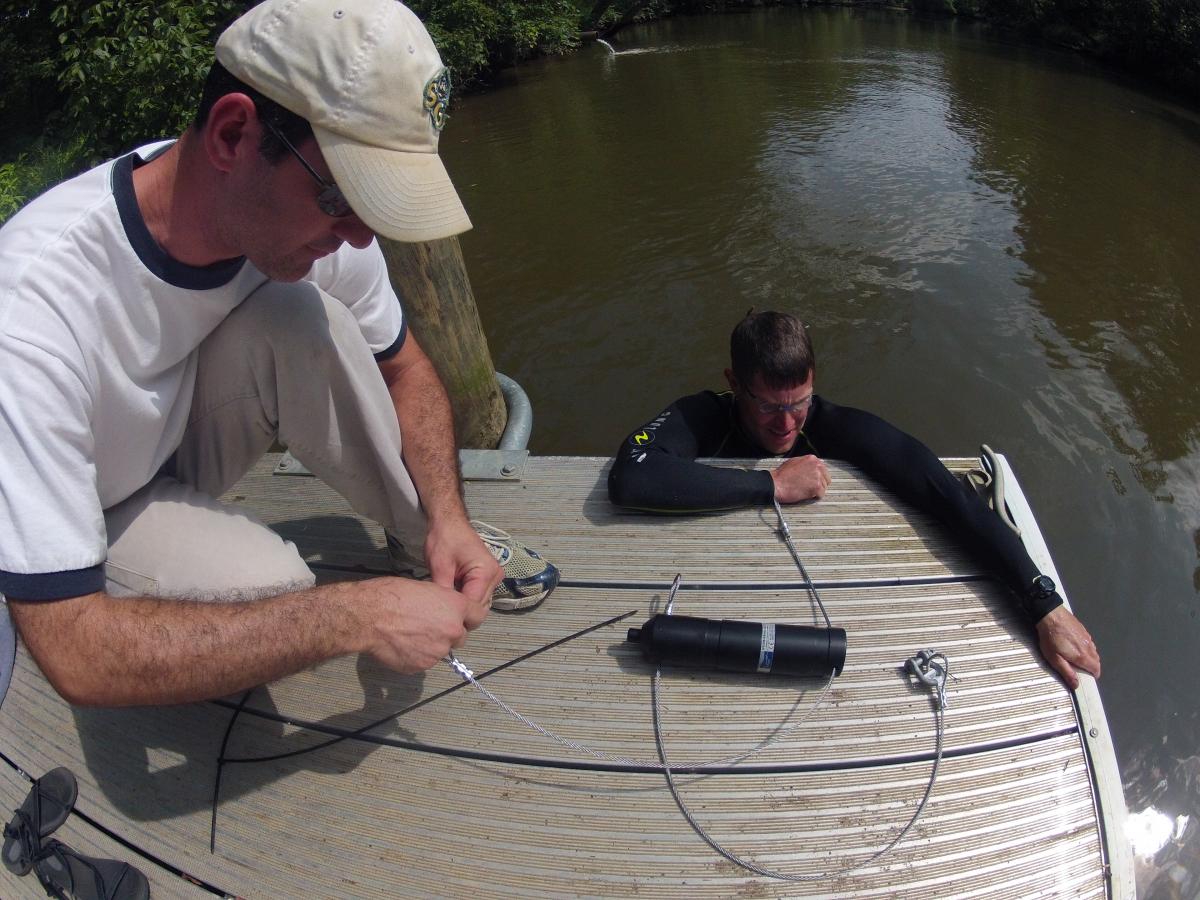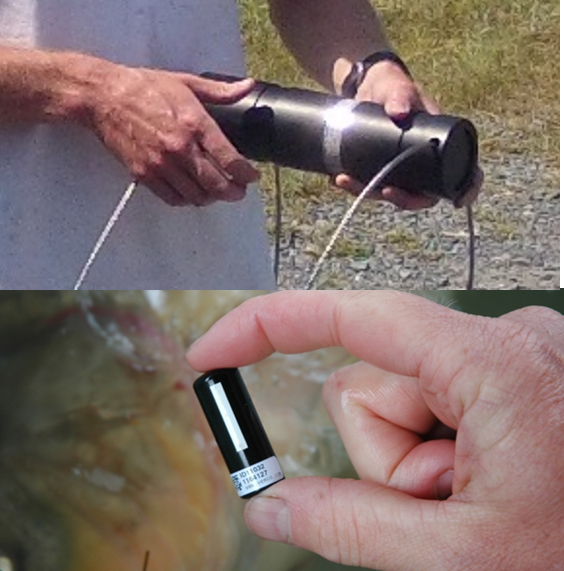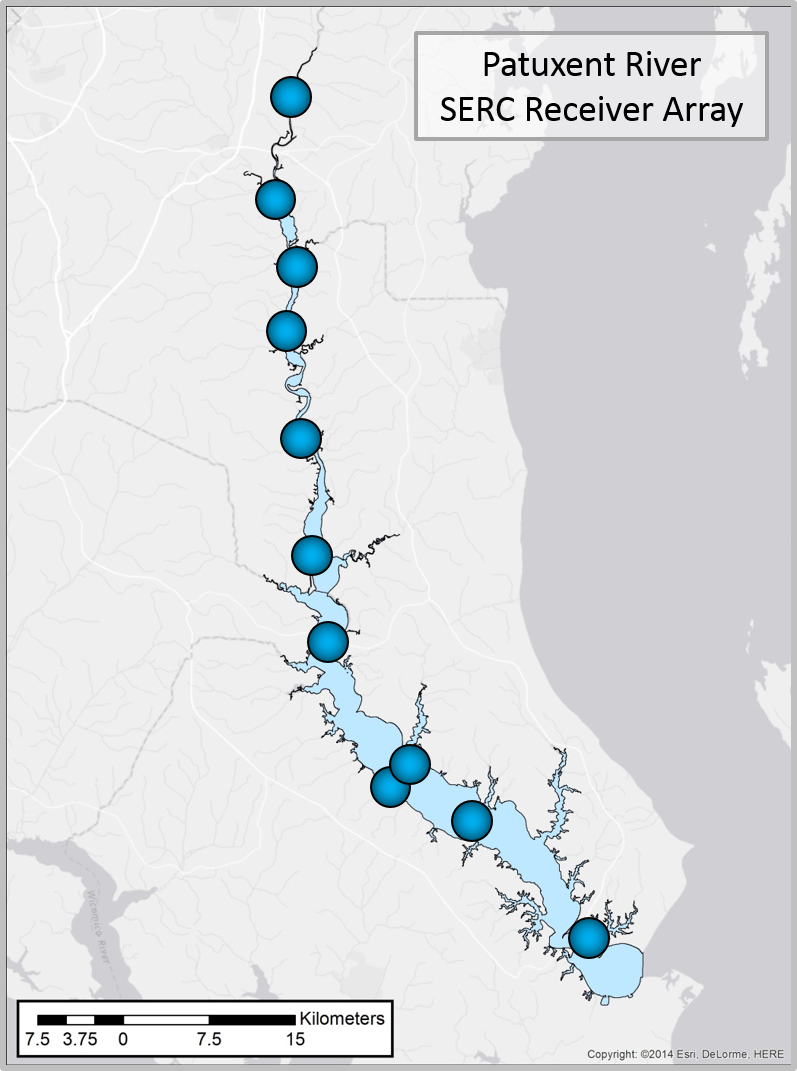SERC Acoustic Receiver Array

Our lab currently has about 25 acoustic receivers in various locations throughout the Chesapeake Bay including the Patuxent River, Rhode River, Patapsco River, Severn River mouth, and main stem near Goose's Reef. Some of the receivers stay in the water year-round, while others are deployed in spring and removed in autumn.

What is an acoustic receiver?
An acoustic receiver is a device that is capable of picking up signals, in this case the signals are sound waves, being emitted from acoustic transmitters. These signals are often called "pings". Each transmitter puts out a unique signal that, if in range of a receiver, will be picked up as a series of numbers.
Patuxent River Acoustic Receivers
There are 12 acoustic receivers deployed in the Patuxent River that remain year-round. Initially, these receivers were deployed as part of a non-native Blue Catfish project. The receivers are located as such that almost the entire river is covered, so we can be pretty confidant that the tagged blue catfish in this river are contained within the array.
Acoustic Receivers on CBIBS Buoys
NOAA has allowed us to attach a few of our receivers to some of the buoys that are a part of their Chesapeake Bay Interpretive Buoy System (CBIBS). Check out their webpage for more information. We hope that the receivers we have deployed in these locations will pick up transmitter signals coming from our tagged cownose rays.
Rhode River Acoustic Receivers
We also have about 10 receivers whose locations vary from year to year; we deploy them in the spring and remove them in the autumn. They are currently in the Rhode River, where we hope they will pick up transmitter signals from common carp.
Acoustic Receiver Data Sharing Networks
The more receivers that are out there, the better chance a transmitter has at being picked up. And every additional data point brings us that much closer to better understanding of habitat use and migration patterns. For this reason, cooperative receiver networks are starting to emerge; these networks facilitate the sharing of data pings that are picked up by another group's receiver arrays with the owners of the transmitters.
Our lab is a member of a network called Atlantic Cooperative Telemetry (ACT). ACT is a network of over 100 researchers from Maine to Florida working on over 80 different species.

